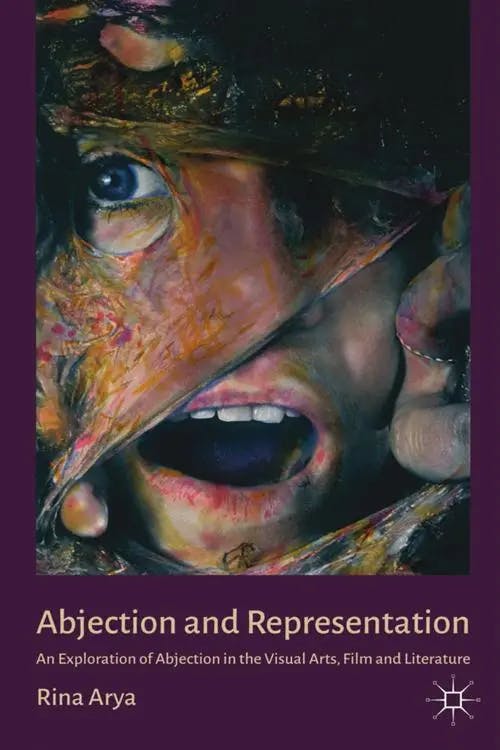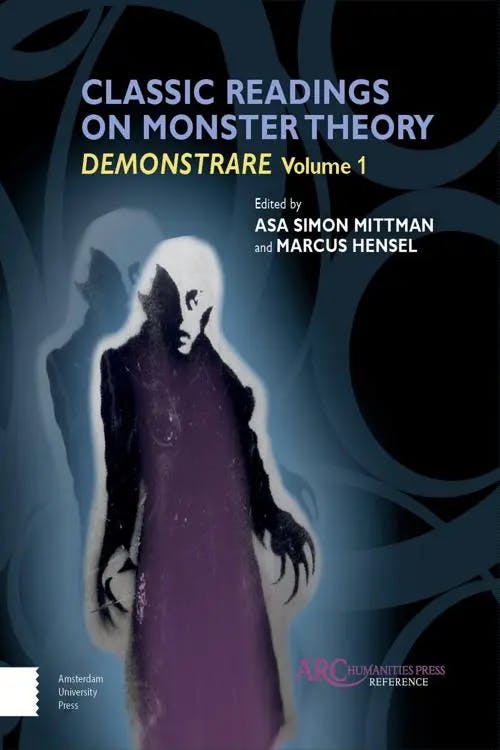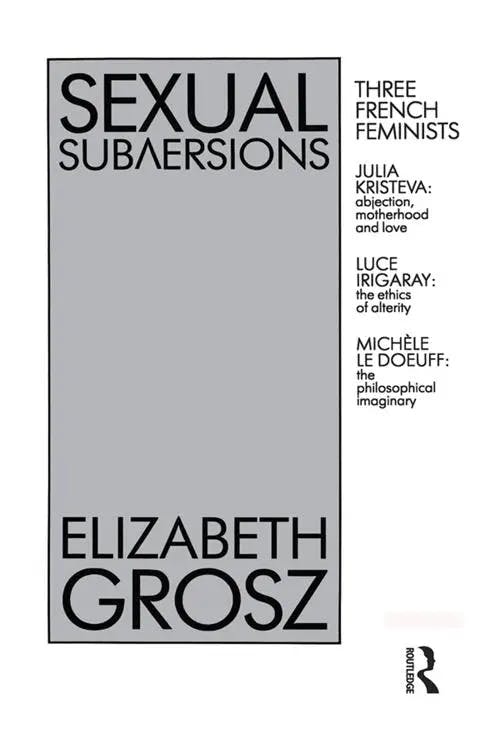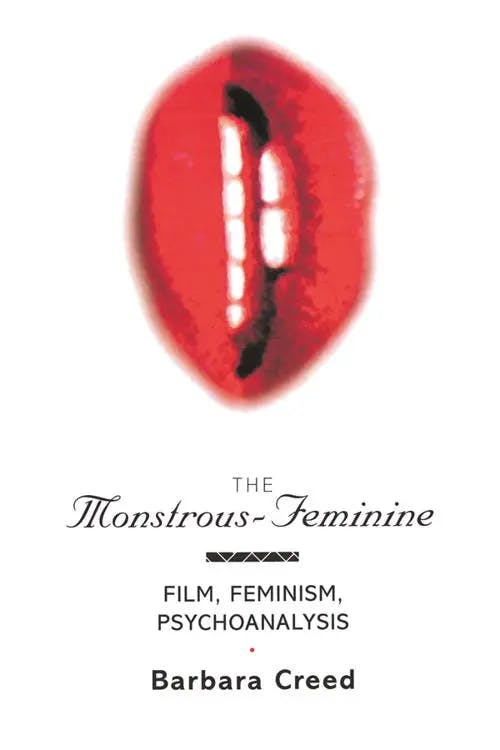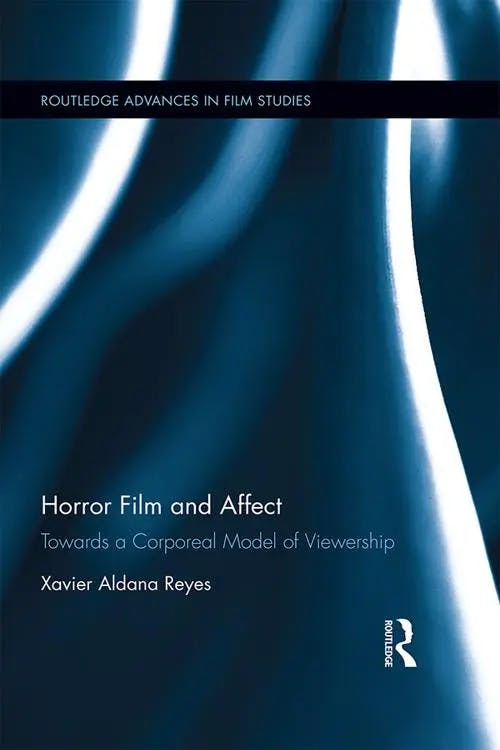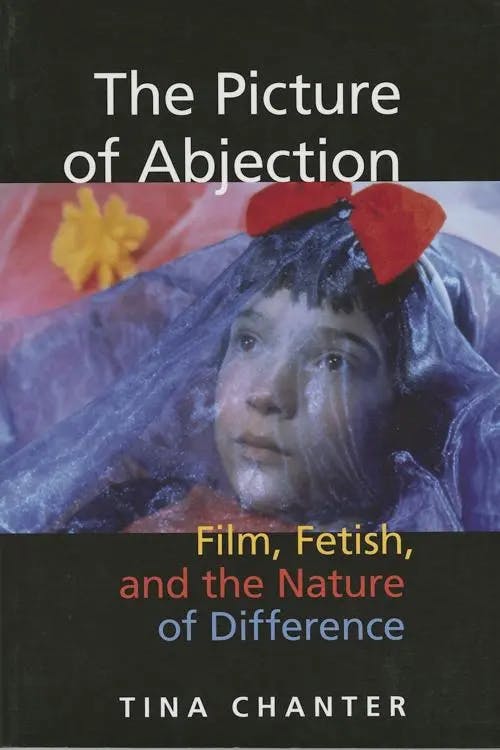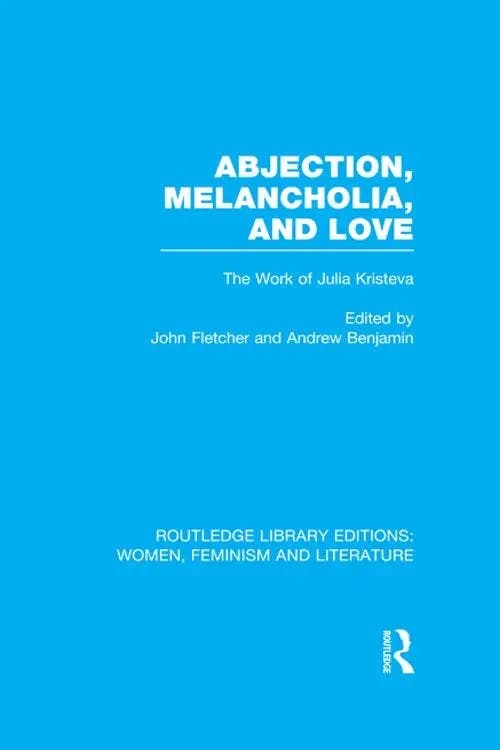What is 'The Abject' & Abjection Theory?
PhD, English Literature (Lancaster University)
Date Published: 15.03.2023,
Last Updated: 20.02.2024
Share this article
Defining Abjection
Abjection refers to the human reaction of horror or disgust when presented with something that threatens a breakdown in meaning between the self and other or between the subject and the object. In other words, it describes our physical and psychological reaction to that which threatens our sense of identity or the established rules and boundaries we understand as the norm. The abject is primarily associated with repulsive or unsettling aspects of our own body and that which threatens its integrity such as death, waste, vomit, menstruation and childbirth.
As Rina Arya explains in Abjection and Representation (2014),
The abject [...] is that which traverses and transgresses; that which endangers a structure and finds itself on the wrong side of the boundary, often giving rise to the prohibitions specified by the taboo. The boundary is in place to safeguard systems and functions and to separate and demarcate different states, such as life and death, and the sacred and the profane.
R. Arya
The abject [...] is that which traverses and transgresses; that which endangers a structure and finds itself on the wrong side of the boundary, often giving rise to the prohibitions specified by the taboo. The boundary is in place to safeguard systems and functions and to separate and demarcate different states, such as life and death, and the sacred and the profane.
One of the earliest theories of abjection comes from Georges Bataille’s 1934 essay ‘Abjection and Miserable Forms’. In this work, Bataille looks specifically at social abjection in which sovereignty within a society is imposed by excluding part of the population, labelling them as morally transgressive. These moral outcasts were ‘represented from the outside with disgust as the dregs of the people, populace and gutter’ (Bataille, 1934, [1993], 9). Bataille discusses how those in power (such as colonial rulers and the wealthier classes) create a sense of disgust, horror or fear against a particular marginalised group, producing an ‘us versus them’ mentality.
Julia Kristeva and the Abject
Perhaps the most significant work on abjection is Julia Kristeva’s Powers of Horror: An Essay on Abjection (1982), available on Perlego within Classic Readings on Monster Theory (Mittman & Hensel, 2018). Kristeva moves away from Bataille’s discussion of social abjection and, instead, bases her theory in psychoanalysis using the work of Sigmund Freud and Jacques Lacan. Kristeva defines the abject as that which does not ‘respect borders, positions, rules’ and ‘disturbs identity, system, order’ (Kristeva, 1982). For Kristeva, abjection is rooted in our sense of identity. She writes that ‘the abject has only one quality of the object and that is being opposed to I’ (Kristeva, 1982). We construct our identity, Kristeva suggests, based upon the boundaries we set between the self and the other; anything which falls outside of this boundary or transgresses it must be ‘radically excluded’ as it poses a threat to our identity (Kristeva, 1982).
What gives rise to abjection is that which is inextricably linked to the self i.e., the human body. Kristeva explains that the expulsion of waste and bodily fluids removes impurities from the body while reminding us how vulnerable our bodies are to disease and death. She writes,
These body fluids, this defilement, this shit are what life withstands, hardly and with difficulty, on the part of death. There, I am at the border of my condition as a living being. My body extricates itself, as being alive, from that border. Such wastes drop so that I might live, until, from loss to loss, nothing remains in me and my entire body falls beyond the limit — cadere, cadaver. (1982)
Asa Simon Mittman, Marcus Hensel
These body fluids, this defilement, this shit are what life withstands, hardly and with difficulty, on the part of death. There, I am at the border of my condition as a living being. My body extricates itself, as being alive, from that border. Such wastes drop so that I might live, until, from loss to loss, nothing remains in me and my entire body falls beyond the limit — cadere, cadaver. (1982)
As Elizabeth Grosz explains in Sexual Subversions (2020),
Abjection is a sickness at one’s own body, at the body beyond that ‘clean and proper’ thing, the body of the subject. Abjection is the result of recognizing that the body is more than, in excess of, the ‘clean and proper’.
Elizabeth Grosz
Abjection is a sickness at one’s own body, at the body beyond that ‘clean and proper’ thing, the body of the subject. Abjection is the result of recognizing that the body is more than, in excess of, the ‘clean and proper’.
Experiences such as sickness separate us from ourselves and make us question our bodily integrity.
This threat, however, is not solely physical. The body which is not ‘clean and proper’ is seen as abnormal. When we encounter the abject body, according to Kristeva, we distance ourselves from it. Abjection, thereby, constructs taboo; it tells us what is acceptable and pure in relation to our bodies and what is, by contrast, transgressive and impure. The abject body is that which is marginalised and socially rejected.
Birth and death
Our first experience of abjection, Kristeva argues, occurs when we are separated from the mother at birth. This rejection happens when the child leaves the realm of the mother, the pre-linguistic semiotic stage, and enters the ‘symbolic realm’ — a space associated with the father. Kristeva writes that,
Maternal authority is the trustee of that mapping of the self’s clean and proper body; it is distinguished from paternal laws within which, with the phallic phase and acquisition of language, the destiny of man will take shape. (1982)
In other words, the child learns at a primal level about their own body, including what is ‘clean and proper’. When childbirth occurs and the child leaves the womb (Kristeva refers to the womb as ‘the chora’), they enter the symbolic, patriarchal world of language and culture. As the child enters this world, they begin to associate the maternal, semiotic stage with shame and revulsion.
Becoming gradually less dependent, the child becomes further separated from the mother, continually rejecting her. This theory of early development is in contrast to Freud and Lacan’s theories which argue a child’s movement into the world results from the fear imposed on them by the father. Kristeva instead suggests that it is abjection which brings the child away from the mother and into the next developmental stage.
The most extreme example of the abject is the corpse. While there may be evolutionary benefits to our compulsion to avoid the dead (due to their potential to cause disease), our disgust towards the corpse, according to Kristeva, is a response to its violation of the boundary between life and death, making us acknowledge our own mortality. Kristeva writes,
The corpse, seen without God and outside of science, is the utmost of abjection. It is death infecting life. Abject. It is something rejected from which one does not part, from which one does not protect oneself as from an object. Imaginary uncanniness and real threat, it beckons to us and ends up engulfing us. (1982)
Corpses provoke a psychological dilemma: we see something which was once, like us, alive but now foretells our own death. We reject its presence through our expressions of fear and disgust, dissociating ourselves from the corpse (and our own death) and reasserting our sense of self.
Abjection and horror
Kristeva’s work on abjection lends itself to critique of modern horror cinema. Barbara Creed in The Monstrous Feminine (2015) identifies three main ways in which the horror genre engages the abject: images of the abject body, the border between human and other, and the construction of the maternal body.
To exemplify her first point, Creed highlights that,
The horror film abounds in images of abjection, foremost of which is the corpse, whole and mutilated, followed by an array of bodily wastes such as blood, vomit, saliva, sweat, tears and putrefying flesh. (2015)
Barbara Creed
The horror film abounds in images of abjection, foremost of which is the corpse, whole and mutilated, followed by an array of bodily wastes such as blood, vomit, saliva, sweat, tears and putrefying flesh. (2015)
Prime examples of this include the notorious projectile vomiting scene in The Exorcist (1973) and the shower scene in Carrie (1976) when the protagonist begins, to her own surprise and horror, menstruating.
Creed identifies how such images cause a visceral reaction from the viewer,
Viewing the horror film signifies a desire not only for perverse pleasure (confronting sickening, horrific images/being filled with terror/desire for the undifferentiated) but also a desire, once having been filled with perversity, taken pleasure in perversity, to throw up, throw out, eject the abject (from the safety of the spectator’s seat). (2015)
This paradoxical relationship the viewer has with horror (disgust on one hand and pleasure on the other, both indulgence in the taboo and expulsion of it), is similar to Kristeva’s understanding of ‘jouissance’. Jouissance is a French term meaning ‘enjoyment’ which has been used in Lacanian psychology to refer to a feeling beyond the pleasure principle. For Kristeva,
Jouissance alone causes the abject to exist as such. One does not know it, one does not desire it, one joys in it. Violently and painfully… One thus understands why so many victims of the abject are its fascinated victims — if not its submissive and willing ones. (1982)
Though Kristeva does not specifically refer to horror cinema, her discussion of the contradictory feelings of revulsion and joy are easily transferred to the viewer’s experience of the horror film.
The second way the abject is used in horror cinema is through the transgression of borders. The significance of borders in defining the self and others is key to constructing the monster; in horror cinema, typically the monster is the abject which threatens to cross the border. Creed gives as examples monsters produced at the boundary between the human and inhuman such as King Kong (1933) and monsters which represent the evil or supernatural as in The Exorcist or The Omen (1976). The monstrous is also produced in the subversion of gender roles, such as in Psycho (1960), or between ‘normal’ and ‘abnormal’ desire, such as in The Hunger (1983).
A final way the abject can be represented in horror is through the representation of the maternal figure as ‘other,’ like in Psycho and Carrie. When female monsters are presented in horror, Creed explains, their monstrosity is almost always inextricably tied to ‘mothering and reproductive functions’ (2015). She goes on to explain that these images of bodily waste linked with reproduction, such as menstrual blood, fill the viewer and the protagonist ‘with disgust and loathing’ as they threaten the constitution of the subject (Creed, 2015). The reason these images of maternal functions, and the monstrous-feminine, horrify and repulse is by reminding the viewer of the time spent in the semiotic stage, at a time when they had no identity or understanding of their body.
However, Creed suggests, these images may also bring about a type of pleasure by harking back to a time when such bodily images were seen as natural and not shameful. She goes on to state that,
Their presence in the horror film may invoke a response of disgust from the audience situated as it is within the social symbolic but at a more archaic level the representation of bodily wastes may invoke pleasure in breaking the taboo on filth — sometimes described as a pleasure in perversity — and a pleasure in returning to that time when the mother–child relationship was marked by an untrammelled pleasure in ‘playing’ with the body and its wastes. (Creed, 2015)
Creed’s reading of the mother in horror, according to Rina Arya, contrasts with Freud’s theory that the mother is a threat because she is castrated; instead, Creed shows she is a threat because she is able to castrate (Arya, 2014). Arya goes on to state that Creed’s work on the monstrous-feminine has been ‘pioneering’ as prior to this ‘film theory had focused on the fear evoked by the feminine because of her lack’ (2014). Abjection theory, therefore, has been an important lens through which to understand the role of female monsters/monstrous mothers within the horror genre.
Despite the overwhelming focus on abjection in terms of gender, the abject appears in horror in many forms. In Jessica Baker Kee’s article ‘Black Masculinities and Postmodern Horror: Race, Gender, and Abjection’ (2015), she analyses Night of the Living Dead (1968) and Candyman (1992), complicating previous readings which have presented ‘Black male bodies as either abjected victims or hypersexualized monstrous Others’ (2014). Kee argues that,
To continue inscribing overdetermined binary significations of difference on human bodies and to assume these differences to be innate, self-evident, and unimpeachable is to both identify and produce a multiplicity of abjected Others — “outsiders” to the exclusionary matrix who are then left vulnerable to the horrors of stereotyping, oppression, and violence. (2014)
Kee cautions against inscribing objected bodies with ‘familiar racial and gendered signifiers’ and encourages, instead, an acknowledgement of how difference is constructed in horror texts and how abjection can be used to disrupt rather than reinforce social and cultural exclusions (2014).
The abject body in horror can also manifest as the ageing body. For example, Ti West’s X (2022) presents the ageing body as a source of both pity and revulsion. Any body which reminds us of our mortality or physical vulnerability can become an abject image in horror. For example, numerous studies of horror films have also explored the ways in which disability is presented as abject. As Melina Hall writes in ‘Horrible Heroes: Liberating Alternative Visions of Disability in Horror’ (2016),
[A]bjection points toward fundamental, inescapable ambiguity and the disturbance of identity, and it can structure reactions to persons with disabilities, who recall vulnerability and mortality to mind.
Hall’s article goes on to demonstrate this in the works of Tim Burton and Stephen King. In her article ‘Liberty, Equality, Fraternity…Vulnerability’, Kristeva argues that all should learn to recognise the abject within ourselves; such action, she suggests, will lead to the inclusion of people with disabilities within society, particularly in politics (Kristeva, 2010).
It is clear why the abject body is often one of terror; it reminds us of our own lack of bodily integrity and forces us to confront our own mortality. When combined with markers of identity, like gender and race, the abject can present social ‘others’ as threats to identity that need to be expelled. However, representation of the abject within horror is not necessarily always deployed in order to terrify and repulse. Instead, as previously mentioned, horror films allow us to reflect upon how visual culture has used the abject body to construct difference and open up important conversations around identity politics.
Critical responses
Abjection theory, particularly in regard to horror studies, has been a useful tool for reframing the ways in which we view the female body in the genre. As Xavier Aldana Reyes highlights in Horror Film and Affect: Towards a Corporeal Model of Viewership (2016),
It has been proven that the representations and constructions of different female bodies are essentially social and cultural (especially religious) and that they often draw on female sexuality, especially the possibility of its excess, on female reproductive organs and on the substances they expel.
Xavier Aldana Reyes
It has been proven that the representations and constructions of different female bodies are essentially social and cultural (especially religious) and that they often draw on female sexuality, especially the possibility of its excess, on female reproductive organs and on the substances they expel.
However, Aldana Reyes suggests that the overwhelming focus on abjection in relation to female bodies is problematic. He writes that,
Many of the problems with abjection come from its almost exclusive connection to the monstrous-feminine and, more specifically, the maternal body, it stems from psychoanalytic propositions that lack scientific evidence and which have been challenged over time. (2016)
The psychoanalytic basis of Kristeva’s work, specifically concerning the abject maternal body, has lent itself to accusations of reproducing patriarchal representations of the female body. As Imogen Tyler writes in ‘Against Abjection’ (2009), ‘employing Kristeva‘s abject paradigm risks reproducing histories of violent disgust towards maternal bodies’ (77).
Tina Chanter, however, while acknowledging that Kristeva’s work is not entirely free of the ‘pervasive sexism that infects psychoanalytic theory’, argues that,
The import of Kristeva’s reading of abjection in Powers of Horror — even if it derives in part from a logic that sometimes participates in, or is complicit with, the abjection of the feminine — resides in the opportunity it opens up to go beyond the privileging of the incestual and parricidal taboos of oedipal logic, replete with the patriarchal heterosexism constitutive of that Logic. (2008)
Tina Chanter
The import of Kristeva’s reading of abjection in Powers of Horror — even if it derives in part from a logic that sometimes participates in, or is complicit with, the abjection of the feminine — resides in the opportunity it opens up to go beyond the privileging of the incestual and parricidal taboos of oedipal logic, replete with the patriarchal heterosexism constitutive of that Logic. (2008)
Powers of Horror, as previously mentioned by Creed, does eschew the castration myth of Freud, refusing to present the maternal and female body as lacking.
Scholars have also argued that Kristeva’s representation of gender is essentialist. Elizabeth Gross argues that this essentialism posits further problems for women's agency. In ‘The Body of Signification’ (2012), Gross writes,
[Kristeva] is content to attribute an irreducibly biological basis to pregnancy while refusing an identity or agency to the pregnant woman. While it may be accepted that pregnancy is not the act of an agent but a series of (largely biological) processes the woman is subjected to, she also refuses to designate an agency to acts of nurturance and socialization undertaken by most mothers.
John Fletcher, Andrew Benjamin
[Kristeva] is content to attribute an irreducibly biological basis to pregnancy while refusing an identity or agency to the pregnant woman. While it may be accepted that pregnancy is not the act of an agent but a series of (largely biological) processes the woman is subjected to, she also refuses to designate an agency to acts of nurturance and socialization undertaken by most mothers.
According to Gross, Kristeva frames the mother as a being without volition and as such reduces her to her biological functions.
However, not all scholars are convinced that Kristeva’s work can be read as essentialist. Chanter has traced the criticisms of Kristeva’s work on the basis of essentialism to root out the development of this interpretation. Chanter concludes her discussion of the literature by stating that,
Kristeva, far from falling into the essentialist trap, reminds us that we cannot afford to neglect the various relations individual women have, as gendered subjects, to their sex. (1993 [2013])
Kelly Oliver
Kristeva, far from falling into the essentialist trap, reminds us that we cannot afford to neglect the various relations individual women have, as gendered subjects, to their sex. (1993 [2013])
Kristeva, as Chanter explains, suggests other pathways and lifestyles for women in her work on abjection, outside that of the mother.
While some critics find Kristeva’s theorisation of the maternal body (and the psychoanalytic school of thought from which it is based) problematic, her work on abjection theory has enormous significance in the field of horror studies. Her work has provided a useful lens through which to understand the affective experience of the horror cinephile while helping to deconstruct the images of monstrosity that are returned to again and again in the genre.
Further abjection reading
Broeck, S. (2018) Gender and the Abjection of Blackness. SUNY Press. Available at: https://www.perlego.com/book/2672099/gender-and-the-abjection-of-blackness-pdf
Hennefeld, M and N. Sammond. (2020) Abjection Incorporated: Mediating the Politics of Pleasure and Violence. Duke University Press. Available at: https://www.perlego.com/book/1465833/abjection-incorporated-mediating-the-politics-of-pleasure-and-violence-pdf
Morris, B. (2020) Sexual Difference, Abjection and Liminal Spaces: A Psychoanalytic Approach to the Abhorrence of the Feminine. Routledge. Available at: https://www.perlego.com/book/1602787/sexual-difference-abjection-and-liminal-spaces-a-psychoanalytic-approach-to-the-abhorrence-of-the-feminine-pdf
What is “abjection” in simple terms?
Who are the key theorists in abjection theory?
How does abjection relate to horror cinema?
What is jouissance?
Bibliography
Aldana Reyes, X. (2016) Horror Film and Affect: Towards a Corporeal Model of Viewership. Routledge. Available at: https://www.perlego.com/book/1633120/horror-film-and-affect-towards-a-corporeal-model-of-viewership-pdf
Arya, R. (2014) Abjection and Representation: An Exploration of Abjection in the Visual Arts, Film and Literature. Palgrave Macmillan.
Bataille, G. (1934 [1993]) ‘Abjection and miserable forms’, More or Less, 2: 87 -101.
Chanter, T. (2008) The Picture of Abjection: Film, Fetish, and the Nature of Difference. Indiana University Press. Available at: https://www.perlego.com/book/568606/the-picture-of-abjection-film-fetish-and-the-nature-of-difference-pdf
Chanter, T. (2013) ‘Kristeva's Politics of Change: Tracking Essentialism with the Help of a Sex/Gender Map’ in Ethics, Politics, and Difference in Julia Kristeva's Writing ed. K. Oliver. Routledge. Available at: https://www.perlego.com/book/1615295/ethics-politics-and-difference-in-julia-kristevas-writing-pdf
Creed, B. (2015) The Monstrous-Feminine: Film, Feminism, Psychoanalysis. Routledge. Available at: https://www.perlego.com/book/1516433/the-monstrousfeminine-film-feminism-psychoanalysis-pdf
Gross, E. (2012) ‘The Body of Signification’ in Abjection, Melancholia and Love: The Work of Julia Kristeva eds. J. Fletcher and A. Benjamin. Routledge. Available at: https://www.perlego.com/book/1685240/abjection-melancholia-and-love-the-work-of-julia-kristeva-pdf
Grosz, E. (2020) Sexual Subversions. Routledge.
Hall, M. (2016) ‘Horrible Heroes: Liberating Alternative Visions of Disability in Horror’, Disability Studies Quarterly, 36(1). Available at: https://production.ojs.dsq-sds.org/index.php/dsq/article/view/3258
Kee, J. B (2015) Black masculinities and postmodern horror: Race, gender, and abjection. Visual Culture & Gender, 10, 47-56. Available at: http://vcg.emitto.net/index.php/vcg/article/view/94
Kristeva, J (1982) Powers of Horror: An Essay on Abjection. Columbia University Press. Trans. Leon S. Roudiez.
Kristeva, J. (1982 [2018]) Excerpts from Powers of Horror: An Essay on Abjection (1982) in Classic Readings on Monster Theory. Mittman & Hensel. Available at: https://www.perlego.com/book/1459197/classic-readings-on-monster-theory-demonstrare-volume-one-pdf
Kristeva, J (2010) ‘Liberty, Equality, Fraternity, and... Vulnerability’, 38(1/2), 251-268. Available at: https://www.jstor.org/stable/25679842
Tyler, I. (2009) ‘Against Abjection’. Feminist theory, 10(1), 77-98. Available at: https://journals.sagepub.com/doi/pdf/10.1177/1464700108100393?casa_token=ePdglImG6DQAAAAA:aKXI_Kf9X6p7SET78WE4frpQYasTFIM4bUkwsZDuDKBl9n9JulVdRf4Tg7v416DhcBxjmMeHhN8
PhD, English Literature (Lancaster University)
Sophie Raine has a PhD from Lancaster University. Her work focuses on penny dreadfuls and urban spaces. Her previous publications have been featured in VPFA (2019; 2022) and the Palgrave Handbook for Steam Age Gothic (2021) and her co-edited collection Penny Dreadfuls and the Gothic was released in 2023 with University of Wales Press.

